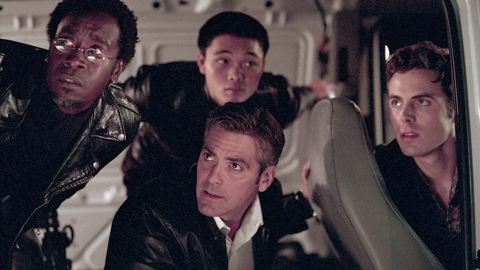Need an agile team? Call in the 3 types of connectors.

We love a good heist movie, but our favorite part is not the caper. It’s building the team.
The brilliant thief—just out of jail to do one more job, he swears—knows he needs to put together a team in which each member has a particular set of skills. The result is a classic collection of misfits: the demolition guy, the confidence man, the electrician, the wheelman, and so on. Each has a unique personality, but they complement their comrades in crime by supporting each other toward a specific goal. Of course, the brilliant thief must comprehend what skills are needed to succeed; otherwise, the heist would be brought to an unsatisfactory conclusion, and the audience would demand a refund.
Like any heist movie protagonist, leaders need to build their team. Their first step will be to understand and then leverage different types of connectors and connections. In her expert class, Erica Dhawan, collaboration consultant and the author of Get Big Things Done, teaches participants to do just that.
Here’s a preview of Dhawan’s third lesson:
Understand the 3 Connector Types
- Thinkers excel at combining ideas and bringing new types of curiosity to problems. They focus on transforming mindsets.
- Enablers excel at bringing together the right people to solve a problem. They focus on building community.
- Connection Executors excel at getting things done. They focus on amplifying and mobilizing ideas and communities.
As a business leader, you must first learn to recognize the three connector types and how they fit into your operational strategy. It sounds simple, but our natural tendency is to appreciate and recognize people with skills and personalities like ours. That can lead us to blind spots that are poison to supercharging collaboration.
We need diversity of voice, thought, and background to spur innovation and productivity. As studies have shown, when diverse communities can coalesce around a shared goal, they handily outperform more homogenous ones. That’s because diverse communities can approach problems from many angles, gather information from unique points of reference, and expand their communications across a broad range of other communities—thus connecting many breakthrough points that drive superior results.
To undercut our blind spots, take a cue from your favorite brilliant thief and work backward. Don’t force team members’ skills to fit whatever tasks may arise. Break down the operation into individual stages. Determine the connectors you’ll need, and then assign them the tasks that match their skills.
If not, you may end up with a demolition man when you need a safecracker. Sure, demolition may get the job done, but it’s going to be messy and chaotic and loud.
How to Build a Team of the Right Connector Types
- When thinking about how to leverage the different connector types, first ask: What phase am I in? What function am I in? What skill sets do I need most now?
- Thinkers are best leveraged during the strategy phase. Look to them if you’re in a high-level corporate function.
- Enablers are best leveraged during the culture change phase. Look to them if you’re in HR or change management.
- Connection Executors are best leveraged during the implementation phase. Look to them if you’re in sales.
- After determining which connector skill sets you need in your current phase and function, ask: What diversity of skill sets will I need over time? How will I engage and align the different connector strengths to specific roles?
Plans evolve, the unexpected happens, and you may lose people along the way. Unlike our heist analogy, careers and organizations continue operations long after the royal jewels have been secured. We don’t scatter to the four winds with our ill-gotten gains.
Given life’s lack of dramatic flair, you’ll need to build a team of connectors that can continue to be viable as new tasks, projects, and opportunities arise.
Enter diversity and extended communal networks. A thinker who nails the strategy phase one time, may not be as strong next time. They’ll need another thinker with unique expertise to either back them up or take the reins. Similar circumstances can arise for enablers and executors, as well.
Knowing when and how to connect connectors is a key skill in leveraging networks to drive results and breakthroughs. It’s a challenging part of management and career growth, but when managed properly, it’s also fulfilling on a personal and professional level. After all, networks aren’t just business idea generators; they are also intimate parts of our lives.
As a bonus, teams given the opportunity to utilize their skills and grow into them are happier and enjoy more career satisfaction. That’s an important part of connecting with your team, as well.
Want your next caper, erm, project to be a success? Want to discover your Connectional Intelligence? Start empowering your network with video lessons ‘For Business‘ from Big Think+. Erica Dhawan’s complete expert class, How to Supercharge Collaboration, includes five lessons:
- Connectional Intelligence 101
- The 5 C’s of Connectional Intelligence
- Leverage the 3 Types of Connectors
- The 4 Benefits of Remote Teams
- Get Big Things Done with Virtual Teams
Request a demo today!




